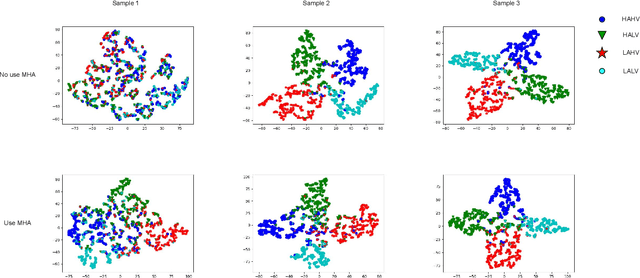Emotion recognition based on multi-modal electrophysiology multi-head attention Contrastive Learning
Paper and Code
Jul 12, 2023



Emotion recognition is an important research direction in artificial intelligence, helping machines understand and adapt to human emotional states. Multimodal electrophysiological(ME) signals, such as EEG, GSR, respiration(Resp), and temperature(Temp), are effective biomarkers for reflecting changes in human emotions. However, using electrophysiological signals for emotion recognition faces challenges such as data scarcity, inconsistent labeling, and difficulty in cross-individual generalization. To address these issues, we propose ME-MHACL, a self-supervised contrastive learning-based multimodal emotion recognition method that can learn meaningful feature representations from unlabeled electrophysiological signals and use multi-head attention mechanisms for feature fusion to improve recognition performance. Our method includes two stages: first, we use the Meiosis method to group sample and augment unlabeled electrophysiological signals and design a self-supervised contrastive learning task; second, we apply the trained feature extractor to labeled electrophysiological signals and use multi-head attention mechanisms for feature fusion. We conducted experiments on two public datasets, DEAP and MAHNOB-HCI, and our method outperformed existing benchmark methods in emotion recognition tasks and had good cross-individual generalization ability.
 Add to Chrome
Add to Chrome Add to Firefox
Add to Firefox Add to Edge
Add to Edge